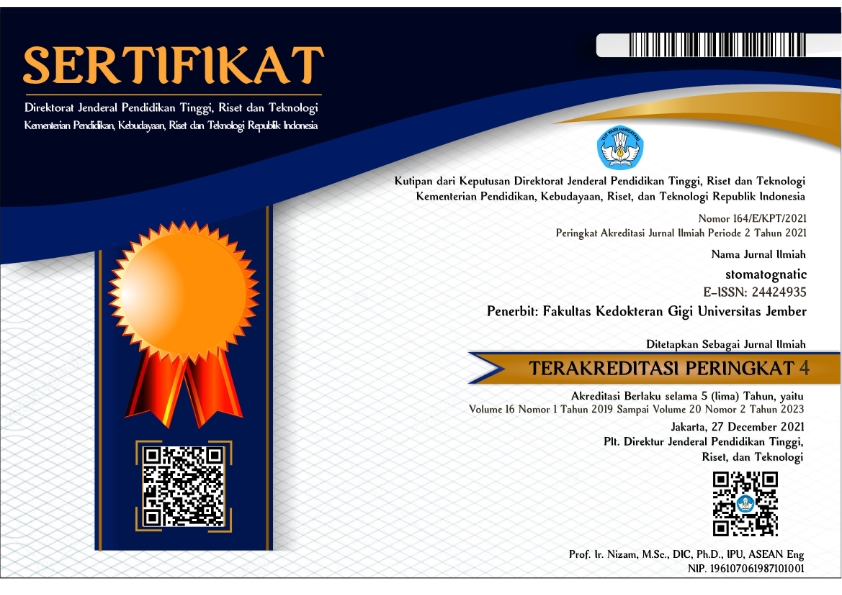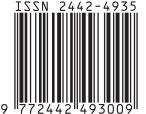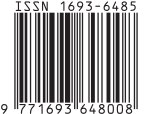Kebutuhan Perawatan Karies (Treatment Need Index) pada Anak Usia 6-12 Tahun di Klinik IKGA RSGM USU Tahun 2019-2020
DOI:
https://doi.org/10.19184/stoma.v19i2.34734Keywords:
age, caries, child, gender, treatment need indexAbstract
Treatment need index (TNI) is a tool used to determine treatment need for caries in a population, J Mann introduced this index in 1993. This study aims to determine the treatment need for caries in children aged 6-12 years at the Pediatric Clinic Universitas Sumatera Utara 2019-2020 based on gender and age. This research is an analytic study with a cross-sectional design. The research sample is secondary data from the patient examination sheet at the Pediatric Clinic University of Sumatera Utara in 2019-2020 and 396 samples meet the inclusion criteria. Caries treatment need based on the TNI are: no treatment required, preventive, sealent, initial, moderate, advanced, radical and extraction. These analytical tests used in this research are the Mann-Whitney and Kruskal-Wallis tests with a significance value of p<0.05. The results show the most need for caries treatment is initial treatment (score 3.89), followed by radical treatment (score 2.26), extraction (score 1.45), moderate (score 0.90), fissure sealant (score 0.67) and advanced (score 0.36). There was no difference in caries treatment need by gender and no difference in caries treatment need based on the child's age. In conclusion, the need for one surface filling is the most common case, and three surface fillings or crown is the least needed treatment.







